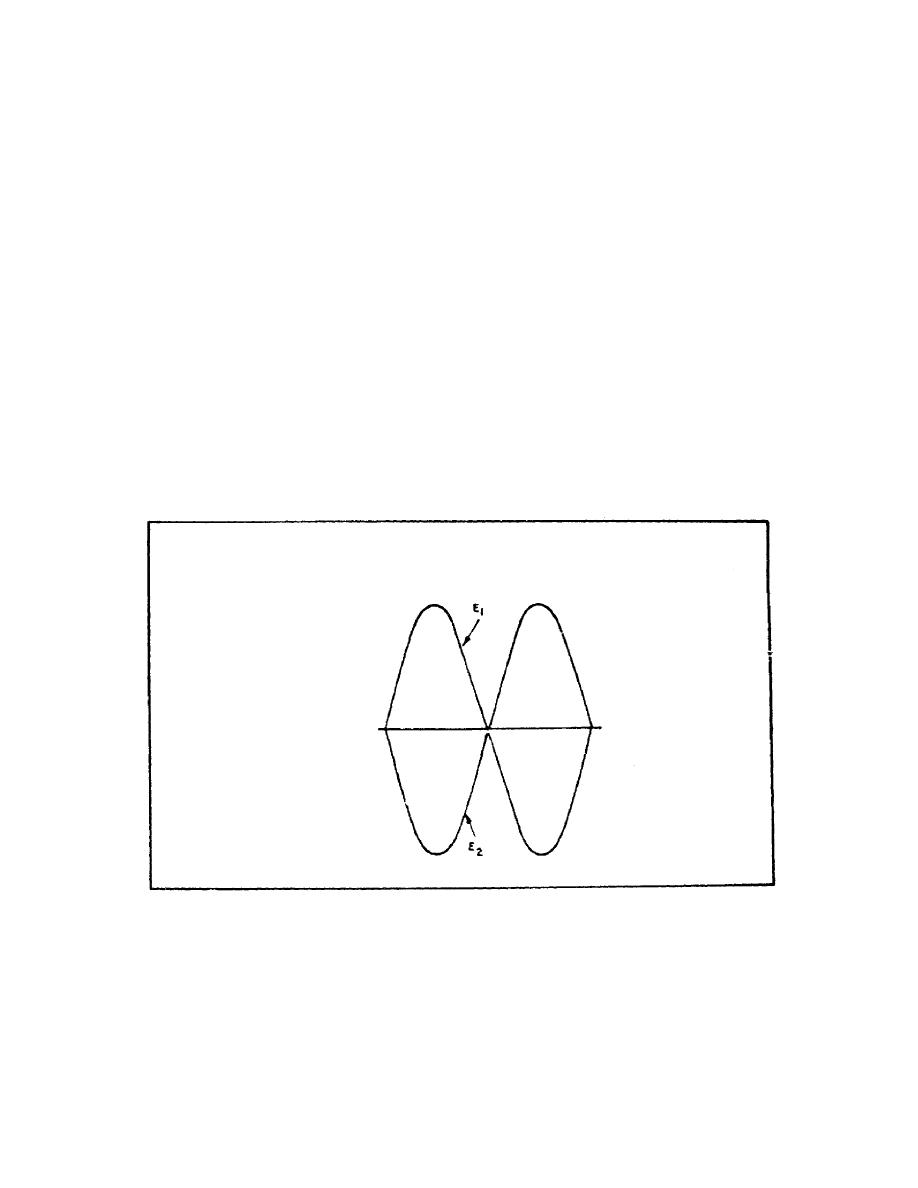
ELECTRONIC PRINCIPLES - OD1647 - LESSON 1/TASK 1
It is possible for one sine wave to lead or lag another sine
wave by any number of degrees, except. 0 or 360. When the
latter condition exists, the two waves are said to be in phase.
Thus, two sine waves that differ in phase by 45 are actually
out of phase with each other, whereas two sine waves that differ
in phase by 360 are considered to be in phase with each other.
A phase relationship that is quite common is shown in Figure 70.
Notice that the two waves illustrated differ in phase by 180.
Notice also that although the waves pass through their maximum
and minimum values at the same time, their instantaneous
voltages are always of opposite polarity. If two such waves
exist across the same component, and the waves are of equal
amplitude, they cancel each other. When they have different
amplitudes, the resultant wave has the same polarity as the
larger wave and has an amplitude equal to the difference between
the amplitudes of the two waves.
FIGURE 70. VOLTAGE WAVES 180 OUT OF PHASE.
To determine the phase difference between two sine waves, locate
the points on the time axis traveling in the same direction.
The number of degrees between the crossing points is the phase
difference. The wave that crosses the axis at the
100





 Previous Page
Previous Page
